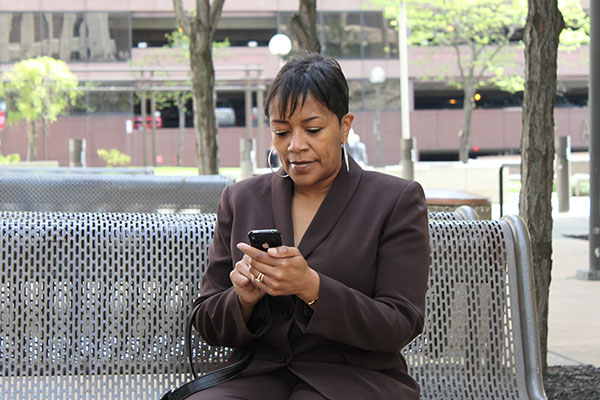A Consumer's Guide to Ohio's Area Code Update
The Area Code
The first three digits of a 10-digit telephone number are known as an area code. These numbers represent a specific geographic area in North America. Each area code can support up to 792 combinations of the first three digits of a telephone number (known as an exchange code) and when these combinations are depleted, the area code is said to be exhausted. Once exhausted, a new area code is required. Presently, 14 area codes are used in Ohio: 216, 330/234, 419/567, 440/436, 513/283, 614/380, 740/220 and 937/326.
Area Code Exhaust
Exhaustion is due to several different factors, including:
- high demand for additional telephone numbers due to the popularity of cellular phones, fax machines, pagers, modems, pay-at-the-pump gasoline stations, ATMs and other telecommunications devices.
- the method by which numbers are assigned to local telephone companies. Telephone numbers are assigned to local telephone companies in blocks of 10,000. Presently, if a local company does not have a need for that many numbers, the numbers go unused.
Additional codes will continue to be created in response to these factors.
The Process
The North American Numbering Plan Administration (NANPA at https://nationalnanpa.com) is responsible for predicting when an area code in Ohio will become exhausted. When a prediction is made, the Public Utilities Commission of Ohio (PUCO) is notified.
The PUCO then creates a planning team to develop solutions for that affected area code based in part upon public input.
Those solutions typically take one of two forms: a geographic split or an overlay. A geographic split occurs when the geographic area of an existing area code is divided into two or more new areas, each having an area code of its own.
An overlay involves using the same geographic area of an existing area code, but assigning all new telephone lines to a new area code. As a result of an overlay, the same geographic space has two or more area codes associated with it.
The planning team then submits its options to the PUCO. The PUCO may then hold additional hearings in the affected areas to ensure additional public input. The PUCO will then adopt a plan and submit its recommendation to the NANPA for final approval. The NANPA reviews the plan and then assigns a new area code, as appropriate.
Once approved, the new code is announced to the public. A permissive dialing period is typically used to introduce the code or the old code can be dialed interchangeably for a trial period until the new code is implemented permanently. This allows consumers and businesses to adjust and prepare for the change.
After a few introductory months, dialing the new code becomes mandatory. People who dial the old area code at this point will receive an error recording or a wrong number.
If Your Area Code Changes
Be certain to inform your friends and family and update your records. Contact your bank, credit card companies, place of employment, etc. to let them know of the change.
Businesses will need to publicize the change. They may also need to look into reprogramming office equipment. In the past, an area code was required to carry a ‘1’ or ‘0’ as its middle digit, but the network was reprogrammed to allow any combination of numbers to be used.
Older equipment will not recognize the new system. Cellular phones may need to be reprogrammed.
An area code overlay also usually requires a transition to 10-digit dialing to permit a fuller use of all the numbers within the area code.
What Is 10-Digit Dialing?
In the past consumers have dialed seven digits to make a local call. With the overlay of new area codes, it has become necessary to dial 10 digits (the area code + the seven-digit telephone number) to make local calls in those areas where area code overlays occurred.
When placing local calls to numbers outside of your area code or inside your area code if there has been an overlay, you should use the 10-digit dialing pattern. As a result of the nationwide implementation of the National Suicide Prevention Line, there is a new dialing procedure for areas of Ohio that use 7-digit dialing and 988 is used as the first three numbers in seven-digit phone numbers. Anyone with a telephone number in the 440 and 513 areas codes is moving from 7-digit local dialing to 10-digit local dialing.
Remember that your rates will not change - even though you are now dialing three more numbers. If you believe that you are being charged toll charges for numbers that had previously been included in your local charges, please contact the PUCO at 1-800-686-7826.
Current Status of Affected Area Codes
Area Code 513
A new 283 area code has been assigned to be used as soon as all 513 telephone numbers are in use. As a result of the nationwide implementation of the 988 dialing code for the National Suicide Prevention Line, customers in the 513 area are already moving to 10-digit dialing.
Area Code 440
The PUCO has approved a plan to overlay the existing 440 area code with a new 436 area code. The 440 area code is expected to run out of available numbers in the second quarter of 2025. Customers with a 440 area code will maintain their current number and area code. New phone subscribers will be assigned the new area code, 436, when the overlay is implemented. Customers in the 440 area are already moving to 10-digit dialing due to nationwide implementation of the 988 dialing code for the National Suicide Prevention Line.
The PUCO’s website has more information on Ohio’s area codes. Visit https://puco.ohio.gov and search for “area code.”
To download: Click the folder with a down arrow icon. To print: Click the printer icon in the top right of the display.
If you need multiple copies for an organization or group, please contact a member of our outreach team.
